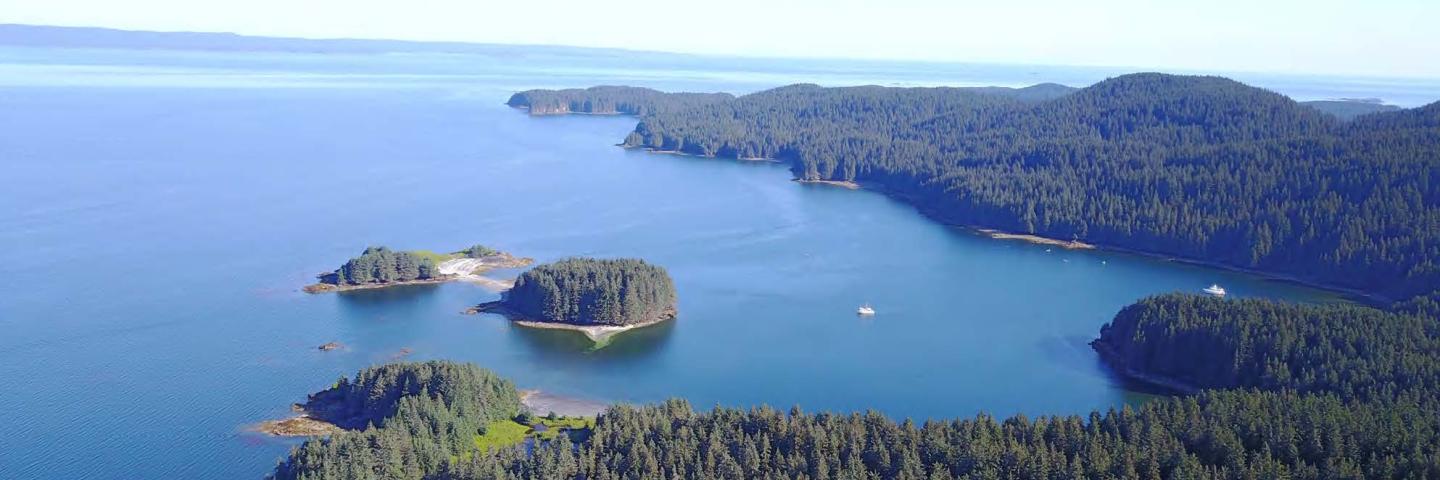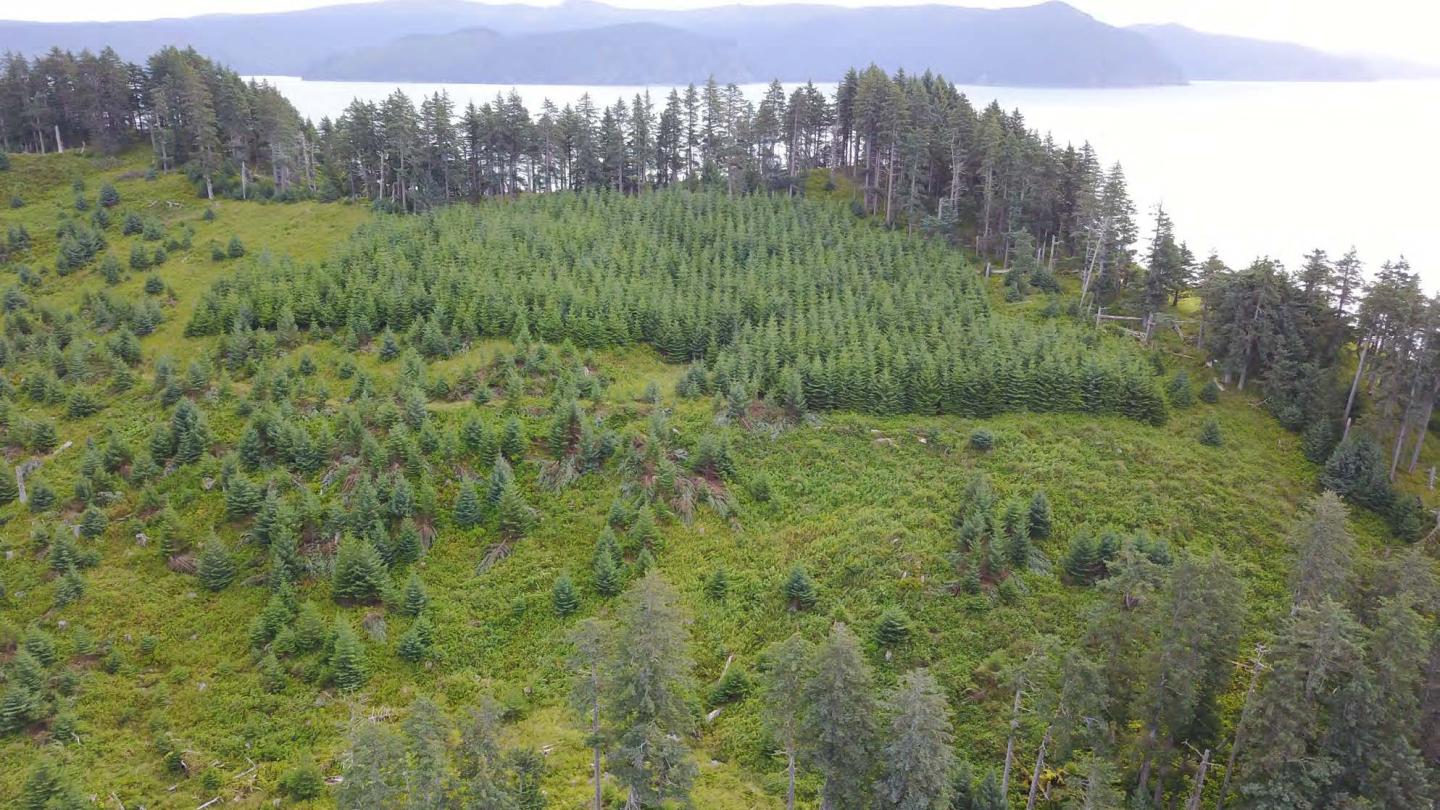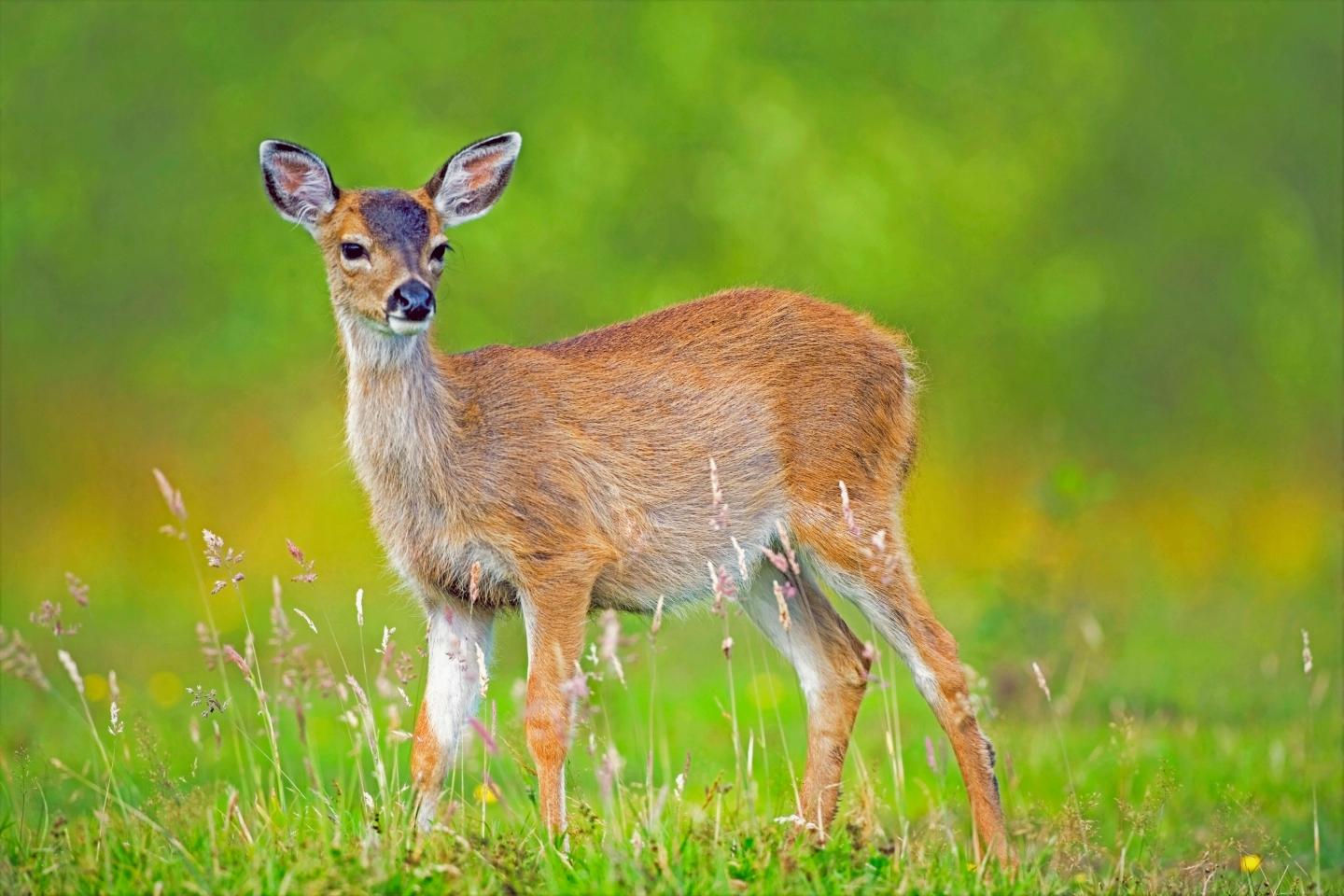NRCS helps Tribal landowners manage sustainable timber production on Afognak Island, Alaska

NRCS is working with Alaska Native landowners to help them meet their forest management goals to sustain the health and diversity of the landscape.
AFOGNAK ISLAND, ALASKA – Timber production is economically important to Alaska. Timber from Alaska forests is used in a wide range of applications, from construction and building materials to high-end specialty products like musical instruments, sailboat masts, and cultural logs used for panels and totems. While the industry has experienced fluctuations, it remains a significant part of Alaska’s economy as well as the global economy for timber and wood products. To keep this market viable for future generations, there is a critical need for sustainable forestry conservation.
Enter the USDA Natural Resources Conservation Service (NRCS). NRCS is a federal agency under the U.S. Department of Agriculture that works exclusively on private lands, with voluntary private landowners such as farmers, ranchers, non-industrial private forestland owners, and other agricultural producers including those who manage lands for subsistence.
In Alaska, most private landowners are Alaska Natives. Alaska Natives own about 13 percent of Alaska. Unlike the Lower 48 states where the reservation system is common, Alaska only has one Indian reservation. The rest of Alaska Native lands are managed by for-profit corporations. This happened in 1971 when Congress passed the Alaska Native Claims Settlement Act (ANCSA), which transferred 44 million acres of federal land to be held in corporate ownership to Alaska Native shareholders. These lands are managed by 12 regional corporations and more than 200 village corporations.
NRCS works with Alaska Native corporations, both regional and village level, as well as Tribal governments, Tribal Conservation Districts, and other Tribal producers to conserve natural resources on private lands. The majority of NRCS’s work with Tribal landowners involves sustainable forestry conservation.

Forest Conservation on Afognak Island
Afognak Island is the second largest island in the Kodiak Island Archipelago in Alaska. It’s located 25 air miles north of the city of Kodiak and spans 40 miles long and 25 miles wide. Land ownership includes a mix of federal, state and private, and much of the island is owned by Alaska Native corporations.
Afognak Island is dominated by a rugged, forested landscape of dense, old-growth Sitka spruce. It’s a haven for fish and wildlife, providing pristine habitat for salmon as well as Kodiak brown bear, Sitka black-tailed deer, Roosevelt elk, bald eagles, and other wildlife. It’s bounty of fish and wildlife, combined with its scenic beauty and remoteness, makes Afognak Island a popular destination for hunting, fishing, nature photography, and sightseeing – though getting there can be a logistical challenge as it’s only accessible by boat or plane.
Forest management on Afognak has many challenges due to its remote location. Landowners manage for timber production of Sitka spruce and are transitioning from old-growth harvest to second-growth management.
NRCS is working with two Alaska Native entities, Koniag and Afognak Native Corporation, to help them plan and implement forestry conservation practices on Afognak Island. Both entities are using the NRCS Environmental Quality Incentives Program (EQIP) to meet their forest management goals to sustain the health and diversity of the landscape.
EQIP is a popular financial assistance program in which NRCS provides technical and financial assistance to reimburse private landowners for costs to perform conservation practices on their land. The conservation practices must address a natural resource concern. A natural resource concern is a situation where soil, water, air, plants, animals or energy resources are experiencing degradation, to the point that the resource is losing its ability to support its intended use or to maintain its long-term sustainability.
Resource concerns to be addressed through the Afognak Island projects include emission of greenhouse gases, plant productivity and health, plant structure and composition, erosion, wildfire risk, and wildlife habitat.

In 2023, Koniag entered into a contract with NRCS for $1.8 million to implement forest stand improvement and tree plantings on 685 acres of forest land. These forestry practices will take place over the next couple of years as part of a landscape-scale reforestation effort. The project will develop a fully-stocked forest with trees that will store more carbon in the long run and improve wildlife habitat over the next 15 to 20 years.
Koniag has been an active partner with NRCS for years and has successfully accomplished multiple EQIP contracts including trails and walkways and forest health projects. They recently received a national Conservation Innovation Grant (CIG) to develop the first adaptive management silvopasture grazing system for subsistence species in Alaska. The project will investigate innovative cost-effective reforestation and habitat enhancement methods (such as AI technology, infrared drones, compost and seed briquettes) and use subsistence species population surveys to inform harvesting decisions.
“NRCS funding has enabled Koniag to continue our program of forest improvement with an ultimate goal of long-term sustainable forestry,” said Peter Olsen, Koniag Natural Resources Manager. “This translates into a reliable source of food, wood products, and employment for generations to come.”
In 2024, Afognak Native Corporation entered into a contract with NRCS for $3.3 million to plant trees on 1,700 acres of forest land that had previously been harvested for timber. The tree plantings will help regenerate forest stands of Sitka spruce following timber harvests and ensure the forestland continues to be managed sustainably.
“For Afognak Native Corporation, the NRCS funding is significant as it allows us to replant and regenerate our forests, while keeping our camp open for subsistence use,” said Dr. Malia Villegas, Senior Vice President of Community Investments with Afognak Native Corporation. “Our lands and our cultural practices are central to who we are, and we could not be more grateful for this investment that helps us preserve both in perpetuity.”
Both projects are using locally-sourced Sitka spruce seed from Juneau, which has been shown to dramatically increase tree growth. Going forward into the next few years, NRCS staff and Alaska Native landowners are excited to continue the conservation work on-the-ground and to create meaningful change on the landscape.

